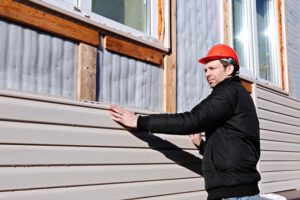Imagine a world where CaRefined LLC dba CannaRefined could offer consultation on the use of cannabis. It’s a reality in some weed-legal locations.
Most survey respondents advised customers on common adverse effects and safe storage practices. Fewer counseled on cannabis use disorder, withdrawal, motor vehicle collision risk, or psychotic reactions.

Flowhub is a point of sale (POS) system that helps cannabis retailers process transactions and track inventory. It also enables cannabis businesses to stay compliant with state marijuana laws. More than 1,000 dispensaries use it across 14 states. Founded by Kyle Sherman in 2015, the company processes more than $3 billion in marijuana transactions each year. Flowhub’s software can be used on any computer, tablet, or smartphone. It also works with the company’s proprietary mobile hardware, which includes the Greet and Stash apps, as well as the Flowhub-exclusive Nug Pro portable cash drawer.
A point of sale (POS) system called Flowhub assists cannabis retailers in managing inventory and processing transactions. Additionally, it makes it possible for cannabis companies to adhere to state marijuana regulations. It is utilized by over 1,000 dispensaries in 14 states. Established by Kyle Sherman in 2015, the organization handles over $3 billion in cannabis-related transactions annually. The software from Flowhub works with any computer, tablet, or smartphone. Additionally, it is compatible with the company’s in-house mobile hardware, which includes the Greet and Stash applications and the Nug Pro portable cash drawer, which is only available through Flowhub.
Unlike many other POS systems, Flowhub’s system is open and highly configurable. This allows dispensaries to create a tech stack with their own choice of hardware, including iPads and Macs. It is designed to give cannabis retailers control over their tools, processes, and data – an important component of owning their differentiated brand experience.
The Flowhub POS platform also includes the smartest deal maker in the industry, which allows retailers to automate virtually any type of promotion. It also lets stores set up price tiers and enables customers to select from the appropriate tier for each product. This feature helps to keep inventory levels accurate, which leads to a better customer experience.
In addition, the Flowhub POS integrates with all major e-commerce providers. This allows dispensaries to intake orders from multiple channels and push them to their POS. It also integrates with Onfleet, enabling retailers to manage their delivery logistics. This helps to maximize the visibility of their menus and streamlines the order fulfillment workflow.
Furthermore, the Flowhub POS is integrated with all the main e-commerce platforms. This enables dispensaries to receive orders through various channels and forward them to their point of sale. Additionally, retailers can handle their delivery logistics thanks to its integration with Onfleet. This improves their menus’ visibility and expedites the order fulfillment process.
Another benefit of Flowhub’s POS system is its ability to accept debit cards. This enables cannabis consumers to skip the cash register and use their credit or debit cards for purchases. However, it is important to note that this service is only available at licensed dispensaries In addition, the POS system does not work with unlicensed cannabis operations. The POS also features an optional backup internet connection, which can be used if the dispensary’s WiFi fails. This is a great way to avoid losing valuable sales.
Curbside pickup, also known as buy online pick up in-store (BOPIS) or click and collect, is a service offered by some retail chains that allows customers to order products and food from an in-store location but then drive to a curbside area to pick them up. The orders are often assembled, packaged, and waiting for the customer to pay when they arrive at their car.
Consumers can place their orders via the company’s website or mobile app and select curbside pickup as the delivery method during checkout. They then receive instructions on how and when to pick up their order at the store. These instructions sometimes differ from store to store, even if they are part of the same chain.
When customers arrive to pick up their orders, a store associate brings the goods right to their vehicle. This reduces the number of people the store employee interacts with and makes the process more efficient. For customers who prefer minimal contact or have limited mobility, curbside pickup pickup can be a lifesaver. They don’t have to go inside the store to get their purchases and can instead stay in their cars and relax, listen to music, talk on the phone, or run errands while they wait for their products to be delivered to them.
As COVID-19 fears dissipate and businesses can reopen their doors, curbside pickup is becoming a popular choice among consumers. It can save them time and money over home delivery and offers the convenience of a seamless, hassle-free shopping experience that fits into their busy schedules.
To successfully implement curbside pickup, it’s important to have a well-defined system for receiving, reviewing, assembling, packaging, and delivering orders. It’s also important to have a clear procedure for communicating with customers and sharing information in real-time. Utilizing role-specific procedures, push alerts, and automated escalations will ensure that the correct person can respond to any customer feedback and convert detractors into promoters. It’s also a good idea to have a dedicated area in your store where curbside orders are stored to ensure everything is clear.
Streamline your in-store and curbside pickup experiences with our drive-thru solution. Customers can purchase products online from your website and select a pick up time at your store, in your drive-thru, or with your delivery service—all without leaving the comfort of their car. This creates a frictionless, convenient shopping experience that boosts basket sizes, builds loyalty, and helps form lasting relationships.
With our drive-thru option, you can simplify your curbside pickup and in-store transactions. Consumers don’t need to get out of their cars to purchase items from your website; they can choose a time to pick them up at your store, drive-thru, or delivery service. This results in a seamless, practical shopping experience that increases basket sizes, fosters customer loyalty and aids in developing long-lasting bonds.
Through the SEO menu on your site, customers can search, sort, filter, and find their preferred cannabis products by brand, weight, strain type, and subcategory, view product descriptions, and verify customer reviews. This drastically reduces their ordering time and makes the purchasing process easier.
Customers can view product descriptions, verify customer reviews, and search, sort, and filter for their favorite cannabis products by brand, weight, strain type, and subcategory through your website’s SEO menu. This expedites the ordering process and saves them a great deal of time.
Medicinal cannabis is derived from the hemp plant and primarily contains two chemical compounds—delta-9-tetrahydrocannabinol (THC) and cannabidiol (CBD). The effects of these substances vary by consumption, with inhalation having a quick onset and edibles taking longer but providing long-lasting effects.
The two main chemical components of medicinal cannabis, which are derived from the hemp plant, are cannabidiol (CBD) and delta-9-tetrahydrocannabinol (THC). The effects of these substances differ depending on how they are consumed; edibles take longer to take effect but have more lasting effects than inhalation.





